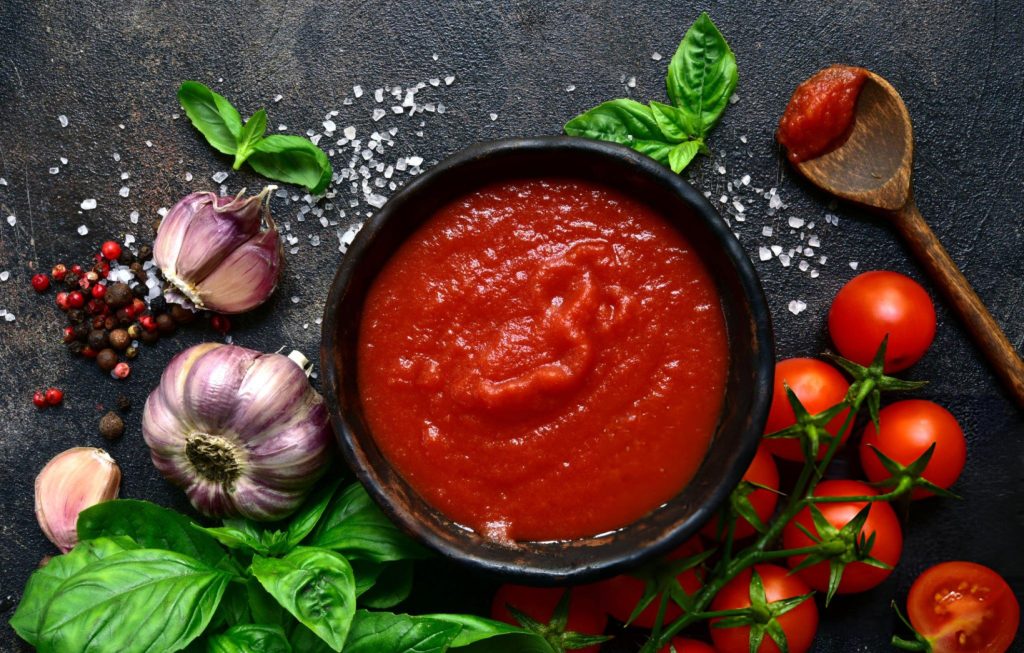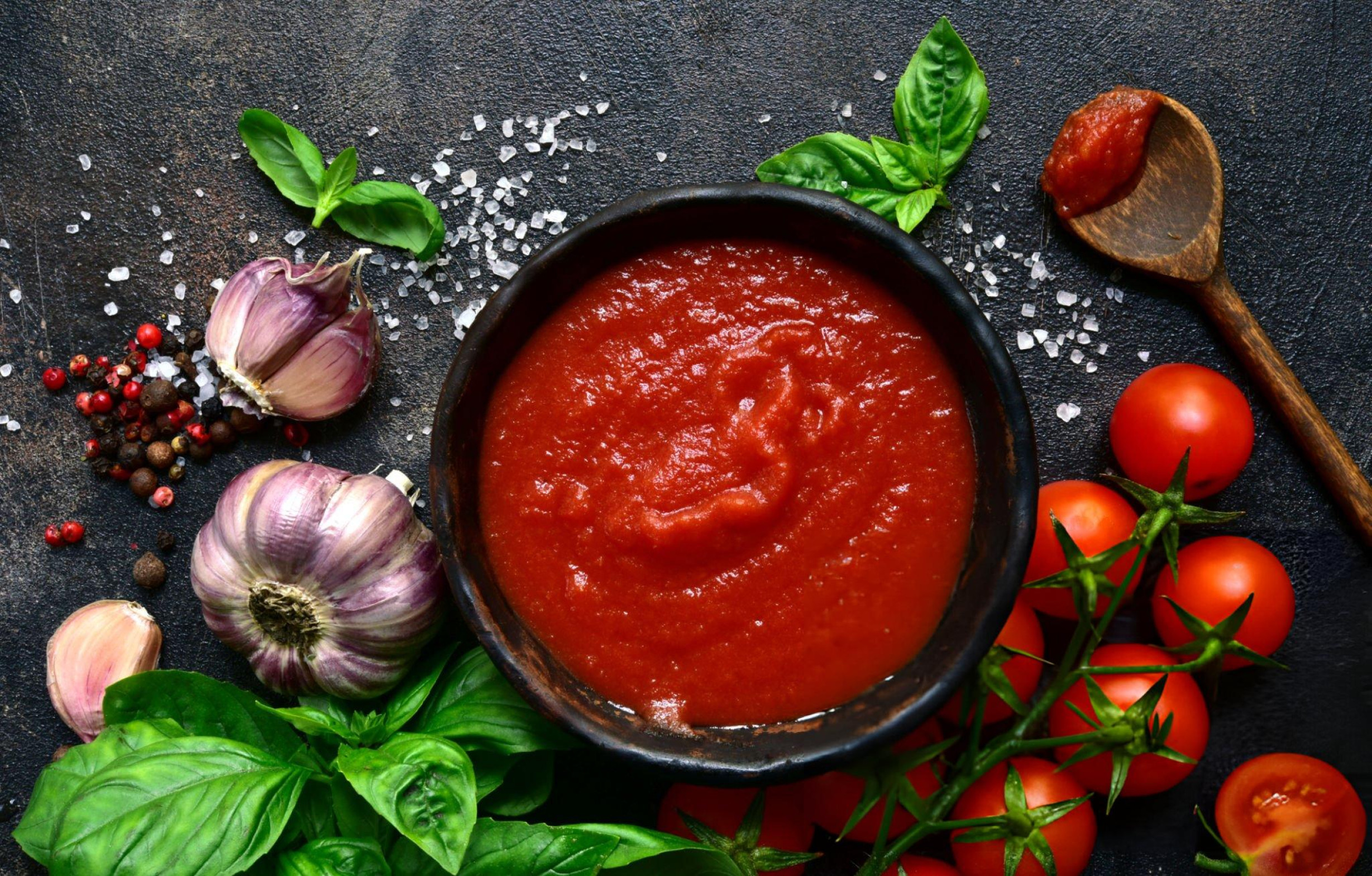Marinara Sauce Recipe
Marinara sauce is the epitome of simplicity and versatility, making it a beloved staple in kitchens worldwide. With just a handful of ingredients, this sauce manages to deliver a robust and satisfying flavor that can be used in an array of dishes, from classic pasta to hearty casseroles. Its balance of rich tomato base, aromatic shallots, and garlic, coupled with a hint of sweetness and spice, makes it an essential recipe for anyone looking to elevate their culinary repertoire.

Ingredients Breakdown
At the heart of this marinara sauce is a can of crushed tomatoes, the primary ingredient that gives the sauce its rich and tangy character. The tomatoes serve as the foundation, providing not only flavor but also the desired texture that clings perfectly to pasta. To build on this, finely minced shallots and garlic are introduced early in the cooking process. These aromatics are essential, creating a fragrant base that deepens the overall taste of the sauce.
Extra-virgin olive oil plays a dual role—adding richness and helping to extract the flavors from the shallots and garlic as they sauté gently in the pot. This oil also contributes to the sauce’s luxurious mouthfeel. Balsamic vinegar is a subtle yet crucial addition, offering a hint of acidity and sweetness that balances the tomatoes’ natural tang. It also adds a depth of flavor that makes the sauce more complex and intriguing.
The seasonings—sea salt, freshly ground black pepper, cane sugar, dried oregano, and red pepper flakes—are carefully measured to enhance and harmonize the flavors in the sauce. The sea salt amplifies the natural sweetness of the tomatoes, while the black pepper adds a mild heat. Cane sugar is used sparingly to counterbalance the acidity of the tomatoes, ensuring
a well-rounded taste. Dried oregano contributes a classic Italian herbaceous note, and the red pepper flakes bring a gentle warmth that lingers on the palate.
Step-by-Step Cooking Instructions
To begin, the aromatics are the first components to hit the pot. As the extra-virgin olive oil heats over low heat, it creates the perfect medium to gently sauté the finely minced shallots and garlic. The key here is patience—allow the shallots and garlic to soften slowly, releasing their flavors without browning. This process typically takes about 3 minutes, during which time the kitchen fills with a tantalizing aroma that hints at the delicious sauce to come.
Once the aromatics are softened to perfection, it’s time to introduce the crushed tomatoes along with their juices. This step marks the beginning of the sauce taking shape. The tomatoes need to be thoroughly mixed with the sautéed shallots and garlic to ensure an even distribution of flavors. At this stage, the balsamic vinegar, cane sugar, dried oregano, and red pepper flakes are added to the pot. Each ingredient brings its unique quality, blending together to create a sauce that is rich, tangy, sweet, and slightly spicy.
The sauce is then left to simmer gently on low heat. This slow cooking process is crucial—it allows the flavors to meld and deepen, resulting in a sauce that is more complex and satisfying. Stir the sauce occasionally to prevent it from sticking to the pot and to ensure an even consistency. After approximately 20 minutes, the sauce should have thickened slightly, and the flavors will have fully developed. Before serving, taste the sauce and adjust the seasoning if necessary, adding a pinch more salt or a grind of pepper as needed.

Recipe Tips & Frequently Asked Questions
- Choosing the Best Tomatoes: Opt for high-quality canned crushed tomatoes to ensure a rich and flavorful base. If possible, select a brand known for using ripe, sweet tomatoes.
- Adjusting the Spice Level: If you prefer a spicier sauce, increase the amount of red pepper flakes. For a milder version, reduce or omit them entirely.
- Making Ahead and Storing: This sauce can be made ahead of time and stored in the refrigerator for up to a week. It also freezes well, so consider making a double batch and saving half for a quick meal later.
- Can I Use Fresh Tomatoes Instead of Canned? Yes, fresh tomatoes can be used, but they need to be blanched, peeled, and seeded before being crushed. The sauce will be fresher but may have a slightly different texture and flavor.
- How Can I Thicken the Sauce? If your sauce is too thin, let it simmer uncovered for a few extra minutes, allowing the excess liquid to evaporate and the sauce to thicken naturally.
- What’s the Best Way to Reheat Marinara Sauce? Reheat the sauce over low heat, stirring occasionally until warmed through. Add a splash of water or broth if the sauce has thickened too much during storage.
- Can This Sauce Be Frozen for Later Use? Absolutely. Portion the sauce into freezer-safe containers and freeze for up to three months. Thaw in the refrigerator overnight before reheating.
- Is There a Substitute for Balsamic Vinegar? If you don’t have balsamic vinegar on hand, you can use red wine vinegar or a splash of lemon juice to achieve a similar acidity.
What to Serve With This Recipe
Marinara sauce is incredibly versatile, making it a perfect companion for a variety of dishes. When it comes to pasta, the options are endless. This sauce pairs beautifully with long strands like spaghetti or linguine, where the sauce can cling to each strand. For a heartier meal, try it with penne or rigatoni, which capture the sauce in their ridges, ensuring every bite is full of flavor.
Beyond pasta, marinara sauce is an excellent base for pizza, offering a vibrant and tangy layer beneath your favorite toppings. It also shines in baked dishes like lasagna or eggplant Parmesan, where its rich flavor enhances every layer. For a simple yet satisfying meal, use it as a dipping sauce for breadsticks or mozzarella sticks. Garnishing the finished dish with fresh herbs like basil or parsley adds a touch of color and a burst of freshness, elevating the overall presentation and taste.
Variations and Customizations
One of the joys of making homemade marinara sauce is its adaptability. For those looking to add a bit more substance, incorporating ground meat or sausage into the sauce is an excellent option. Simply brown the meat before adding the aromatics, then continue with the recipe as written. This variation transforms the sauce into a robust meat sauce, perfect for hearty pasta dishes.
Vegetarians can enhance the sauce by adding sautéed vegetables such as mushrooms, zucchini, or bell peppers. These additions not only increase the nutritional value but also add layers of flavor and texture. If you’re in the mood for something different, experimenting with herbs and spices can give the sauce a new twist. Try adding thyme or rosemary for a more earthy flavor or a pinch of fennel seeds for a slight aniseed note.
This marinara sauce recipe is a testament to the beauty of simplicity in cooking. With just a few ingredients and a bit of time, you can create a sauce that is both rich in flavor and versatile in its uses. Whether you’re serving it over pasta, using it as a pizza base, or incorporating it into your favorite Italian dishes, this sauce is sure to become a staple in your kitchen. Give it a try, and enjoy the satisfaction of homemade goodness that’s perfect for sharing with loved ones.

Ingredients
- 1 (28-ounce) can crushed tomatoes
- ⅓ cup finely minced shallot
- 2 large garlic cloves, finely minced
- 2 tablespoons extra-virgin olive oil
- 2 teaspoons balsamic vinegar
- ½ teaspoon sea salt
- Freshly ground black pepper
- ¼ teaspoon cane sugar
- ¼ teaspoon dried oregano
- ¼ teaspoon red pepper flakes
Instructions
In a medium-sized pot, warm the extra-virgin olive oil over low heat. Once heated, introduce the finely minced shallot, garlic, sea salt, and a few cracks of freshly ground black pepper. Sauté gently, ensuring to stir frequently, for about 3 minutes until the aromatics soften.
Next, pour in the crushed tomatoes along with their juices, followed by the balsamic vinegar, cane sugar, dried oregano, and red pepper flakes. Give everything a good stir, then cover the pot and let it simmer gently on low heat. Allow the sauce to meld and develop its flavors for approximately 20 minutes, stirring occasionally. Adjust seasoning if necessary before serving.

Marinara Sauce Recipe
Ingredients
- 1 28-ounce can crushed tomatoes
- ⅓ cup finely minced shallot
- 2 large garlic cloves finely minced
- 2 tablespoons extra-virgin olive oil
- 2 teaspoons balsamic vinegar
- ½ teaspoon sea salt
- Freshly ground black pepper
- ¼ teaspoon cane sugar
- ¼ teaspoon dried oregano
- ¼ teaspoon red pepper flakes
Instructions
- In a medium-sized pot, warm the extra-virgin olive oil over low heat. Once heated, introduce the finely minced shallot, garlic, sea salt, and a few cracks of freshly ground black pepper. Sauté gently, ensuring to stir frequently, for about 3 minutes until the aromatics soften.
- Next, pour in the crushed tomatoes along with their juices, followed by the balsamic vinegar, cane sugar, dried oregano, and red pepper flakes. Give everything a good stir, then cover the pot and let it simmer gently on low heat. Allow the sauce to meld and develop its flavors for approximately 20 minutes, stirring occasionally. Adjust seasoning if necessary before serving.

